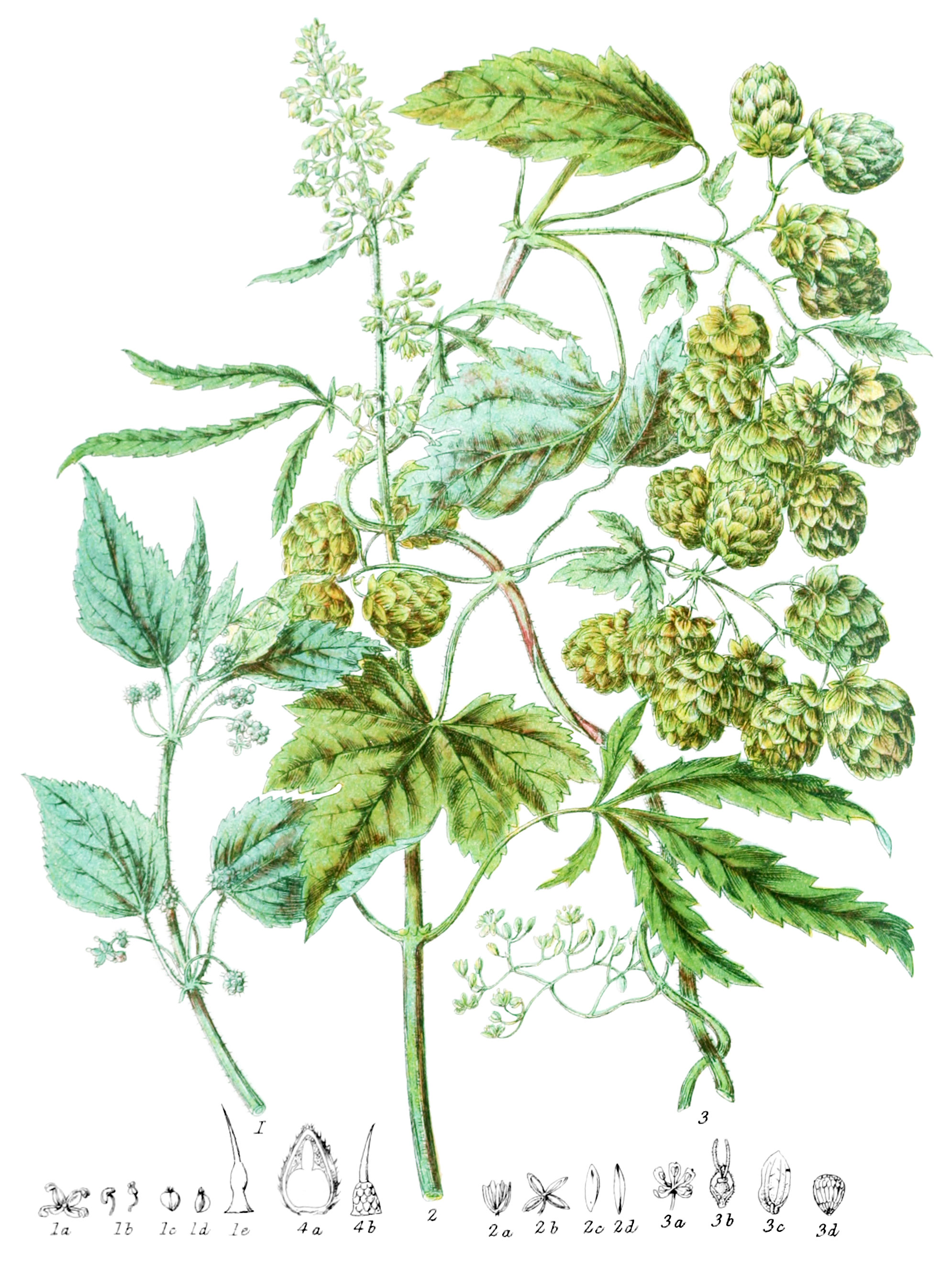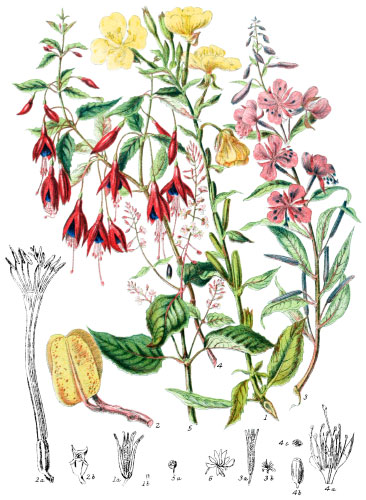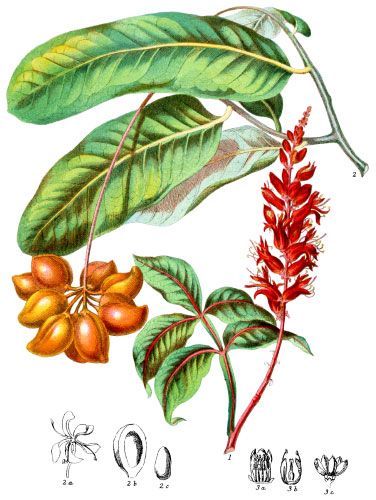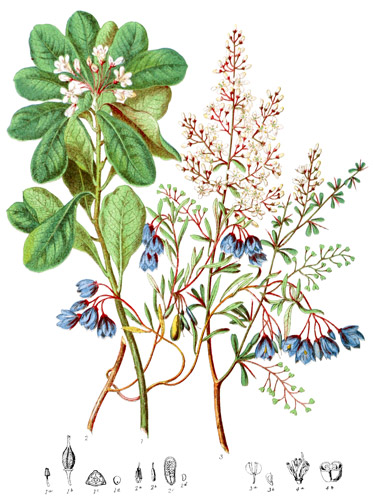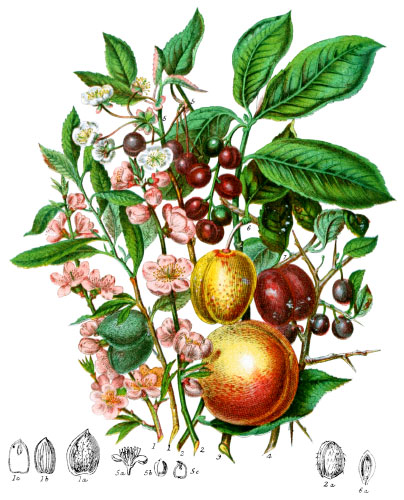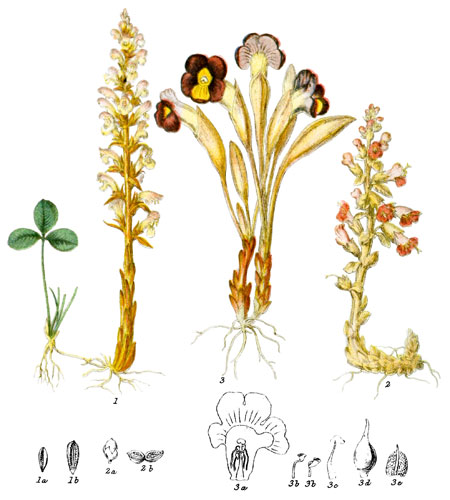Key characteristics
Trees, shrubs, and herbaceous plants, some of which have rough stems. They contain no milky juice. The leaves are alternate, simple, or lobed, usually covered with asperities, or stinging hairs; stipules usually membranous and deciduous. The flowers are herbaceous, inconspicuous, the stamens and pistil are usually in separate flowers, which are in catkins, or close heads, or scattered. The calyx is membranous, loved, or in single scales, persisten. The stamens are of definite number, distinct, inserted into the base of the calyx and opposite its lobes; the anthers, often curved inwards in the bud, turning backwards with elasticity when the flower expands. The ovary is above the calyx, the stima single and fringed. The fruit is a simple closed nut, surrounded by the membranous or fleshy calyx, containing one seed, which has either fleshy albumen or none.
This Tribe has close affinity with Artocarpaceæ, but is distinguished by having no milky juice.
An excessively caustic alkaline juice, and narcotic properties, exist in many of these plants.
Select plants in this order
Not all plants listed are illustrated and not all plants illustrated are listed.
- Urtica, the type of this Order, is a genus remarkable for its stinging properties; and several species are covered with small projecting vesicles full of a strong alkaline juice, surmounted by a tubular prickle, spiral on its surface, with a sharp point by which it is enabled readily to penetrate the skin and infuse the irritating juice.
- Urtica pilulifera (1) is not very frequent in England, but is occasionally found on heaps of rubbish.
- U. dioica is the common Nettle on all neglected ground.
- U. urens is most frequent as a garden weed: all these species, and several others, have strong stings.
- But the most powerful in its causticity is perhaps the U. baccifera, of the Antilles; the entire plant is clothed with large stinging hairs of considerable force.
- U. caracasava is a native of Caracas, where it grows to the height of eight feet, the shrubby stem marked with the great scars of fallen leaf-stalks. The leaves are heart-shaped, twenty-two inches long, and only slightly stinging. This genus is found on the Sikkim Himalaya, up to nearly ten thousand feet, mingled with Ficus: U. heterophylla is of gigantic size, on borders of miaze-fields.
- Urtica abounds also in the Lucon Isles.
- U. urentissima is said to cause bad effects, which endure for a year, to the inhabitants of Timor; the leaves of the U. crenulata and other Indian species are scarcely less poisonous.
- Some, however, possess useful properties; the tubers of U. tuberosa are eaten by natives in India, and tough fibrous stalks of U. tenacissima and of U. cannabina are made into strong cordage in Sumatra.
- U. dioica is wholesome when young, and the stlaks may be made into cloth or paper; this is one of the most widely dispersed species, growing all over Europe, in Siberia, Japan, Barbary, and elsewhere.
- Cannabis sativa (2) was known to the Arabians in he most remote period, and the manufacture of Hemp is as ancient as that of Flax. It requires a rich soil and warm climate, in some parts of Italy attaining the height of eighteen feet: in this country it is seldom above six feet. Throughout Germany and all Continental countries it is cultivated to a great extent, and affords a valuable crop. The plants are pulled up when fully ripe and left to wither and bleach on the ground; after which the stalks are beaten to separate the fibres From these every variety of cordage and rope, and strong cloth, are made. An useful oil is extracted from the seeds, employed in painting here, and in cookery in Russia. In hot countries a peculiar and fragrant resin is developed on the Hemp plants, which has powerful narcotic properties, and, being collected in small masses, is used as stimulant by Indians, Hottentotas, Egyptians, Arabians, and Brazilians.
- Humulus lupulus, Hop (3), was first brought to England from Flanders as a cultivated plant, in the time of Henry VIII., though it is occasionally found wild in Great Britain. In the third year of growth the plants bear fruit, being trained to poles about sixteen feet high; in Bavaria they attain a greater height, and produce abundant crops with more consistency than here. The fertile capsules are the valuable portion, each scale having one seed at its base; they are covered with minute resinous drops, bitter and narcotic, peculiarly adapted for making good beer. The scent of the dried clusters of flowers is highly soporific, which renders them available to procure sleep in sickness, when narcotic medicine is unsuitable. The fibres of the stalks are woven into cloth in Sweden, and the leaves are used to dye yellow.
- Parietaria, the pellitory of old walls and ruins, belongs to this Tribe, and is the only British example, besides Urtica and Humulus. Parietaria clings to forsaken ancient building; Urtica hovers about the present dwellings of man, ever to be seen in cultivated ground, and by the wayside rough places.
Locations
The plants of this Tribe are widely dispersed over all parts of the world: in he hottest regions of the Tropics, in the coldest northern countries, on dry walls, and in the damp primæval forests. Cannabis inhabits the cooler parts of Asia.
Legend
- Urtica pilulifera, Roman Nettle. England.
- Stamen Flower.
- Stamens.
- Seed-vessel.
- Carpel.
- Hair, magnified.
- Cannabis sativa, Hemp. India.
- Stamen flower.
- Flower, opened.
- Sepal.
- Stamen.
- Humulus lupulus, Common Hop. England.
- Stamen flower.
- Pistil flower.
- Bract.
- Grain of Lupuline, magnified.
-
- Urtica dioica. Section of Seed-vessel.
- Hair, magnified.
Explore more
Posters
Decorate your walls with colorful detailed posters based on Elizabeth Twining’s beautiful two-volume set from 1868.
Puzzles
Challenge yourself or someone else to assemble a puzzle of all 160 botanical illustrations.
